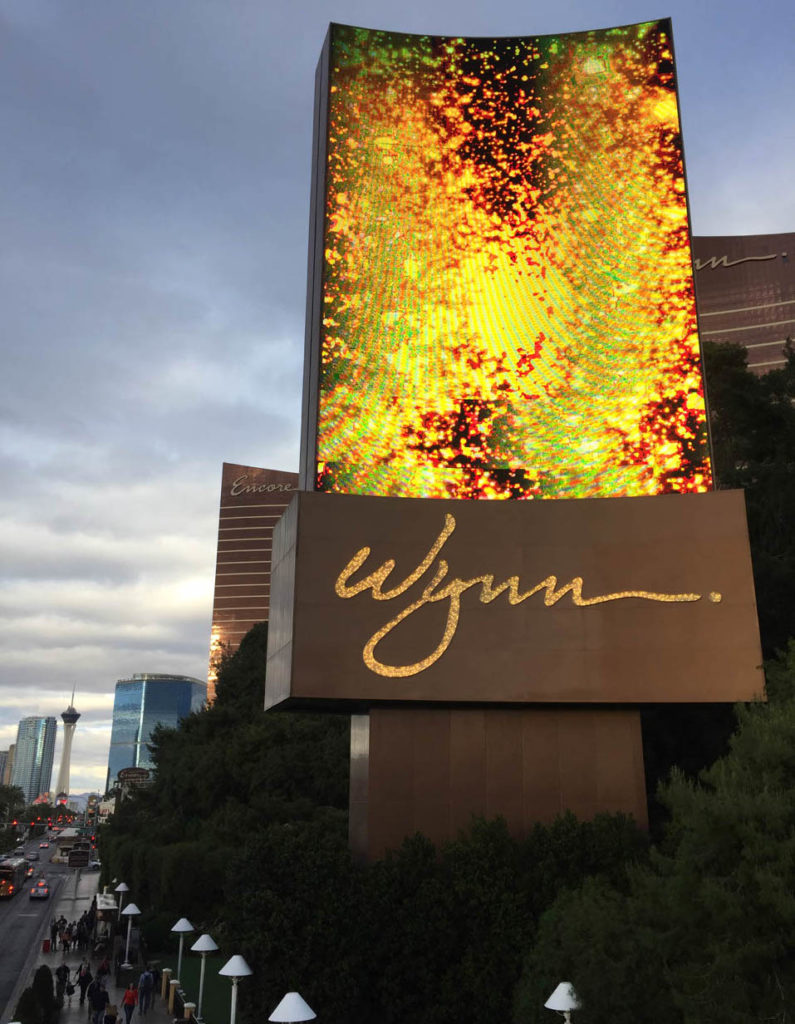The Dam on the Colorado River, Cheap Electricity and Thomas Young: the History of Neon Lights in Las Vegas.
[vc_row type="in_container" full_screen_row_position="middle" scene_position="center" text_color="dark" text_align="left" overlay_strength="0.3" shape_divider_position="bottom"][vc_column column_padding="no-extra-padding" column_padding_position="all" background_color_opacity="1" background_hover_color_opacity="1" column_shadow="none" column_border_radius="none" width="1/1" tablet_text_alignment="default" phone_text_alignment="default" column_border_width="none" column_border_style="solid"][vc_column_text]On July 3, 1930, Herbert Hoover, the 31st president of the United States, signed a bill to build a large dam on the Colorado River. Construction began in 1931, causing thousands of workers - young men - to move to nearby Las Vegas at that time.
Local businessmen and mobsters quickly occupied their free time by offering entertainment in casinos and strip clubs.
Nevada authorities realized that gambling could be a substantial source of income for the state and legalized it in the first year of dam construction. In 1935, the dam was completed and cheap electricity began powering Las Vegas. It was then that Thomas Young, an English immigrant and Mormon who ran a sign-making company, realized that cheap electricity offered an opportunity to develop a new technology, namely neon lights. This was the beginning of YESCO (Young Electric Sign Company).
In the following decades, Thomas Young and his sons and grandsons built many advertisements in Las Vegas that remain symbols of the city to this day.

In the early '90s, YESCO began producing advertisements based on LED (light emitting diode) technology. A separate company, YESCO Electronics, was established, which eventually moved to Logan, Utah, where it is still headquartered today.

In 2015, a new chapter began in the company's history - Samsung Electronics acquired a stake in it, and the name was changed to Prismview.

In the first week of April, I had the opportunity to visit the factory in Logan and learn about the technology of LED screen manufacturing. It's a rather complicated process, which I show in a very simplified way in the following pictures. What you see is the production of screens with TH (through hole) diodes, used for large-format outdoor screens. The production process is more complicated for screens with SMD (surface mount diode) diodes, especially at the initial stage of mounting diodes to the boards.
Everything starts with mounting diodes on a board - the device that does this resembles a sewing machine somewhat.

Then the boards with mounted diodes travel to another machine where the diodes are soldered.

Some elements are assembled and soldered by hand.

The boards are enclosed in high-quality plastic casings, then subjected to a burning process, and subsequently coated with silicone on both sides, making the whole unit waterproof:

This is what the finished modules look like, which are then mounted to the screen's supporting frame structure:

After mounting the diode modules on the supporting structure, wiring and additional equipment needed to control the screen are installed.


Finally, the screen is calibrated and tested, then packaged for transport and handed over to the shipping company. After arriving at the installation site, it just needs to be mounted on the supporting structure, connected, and it's ready to work.

From my observations, the conversion of traditional billboards to LED screens in the United States is happening at a fairly rapid pace. Many billboards at city exits, and even on major interstate highways, are already using the new technology. They display static images that change every 8 seconds. The screens are well-calibrated and don't glare at drivers. The changing images add some variety to sometimes monotonous routes.


 [/vc_column_text][/vc_column][/vc_row]
[/vc_column_text][/vc_column][/vc_row]

